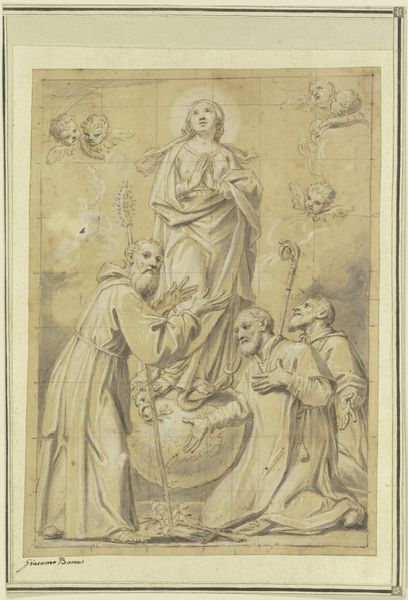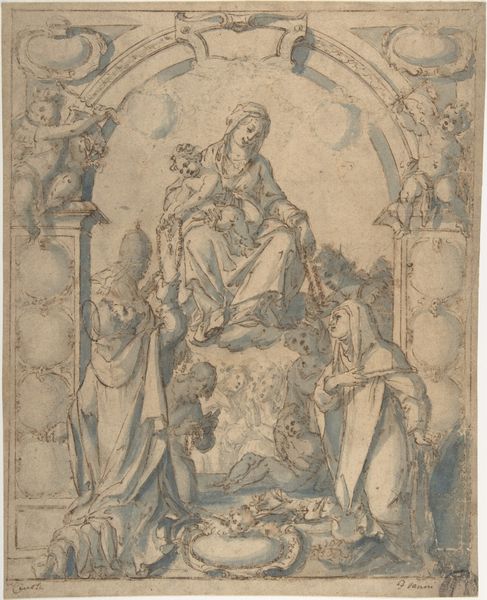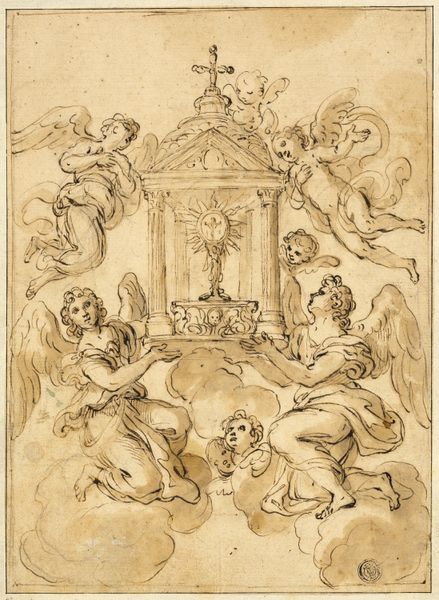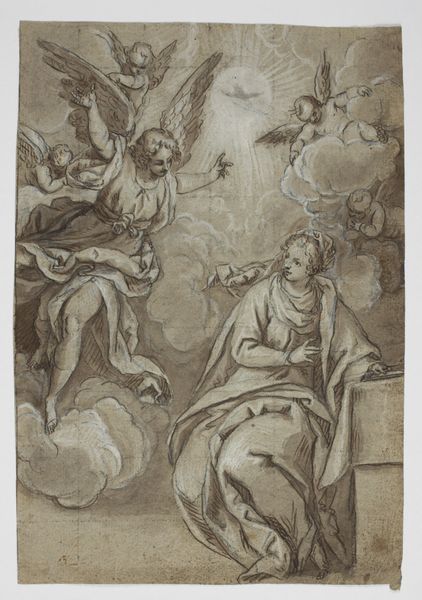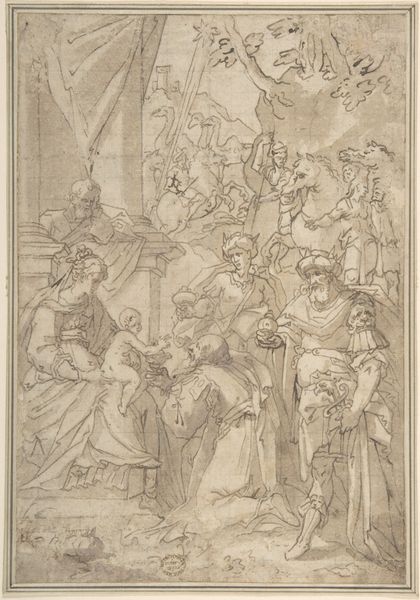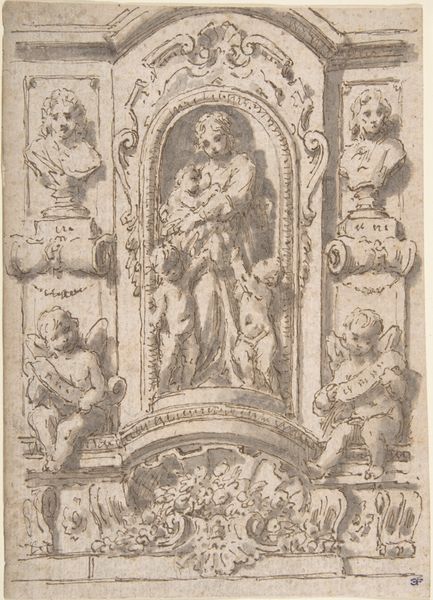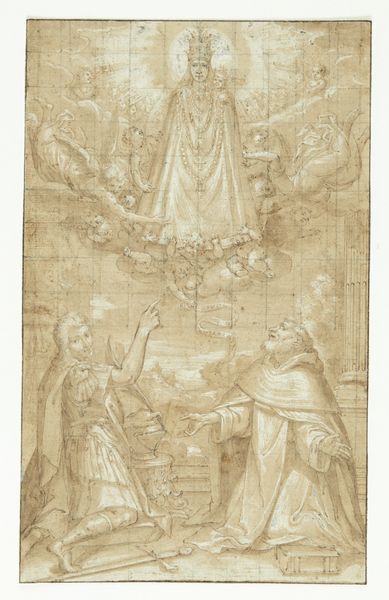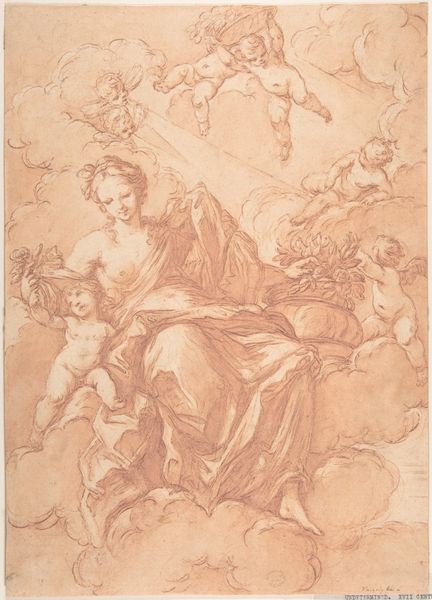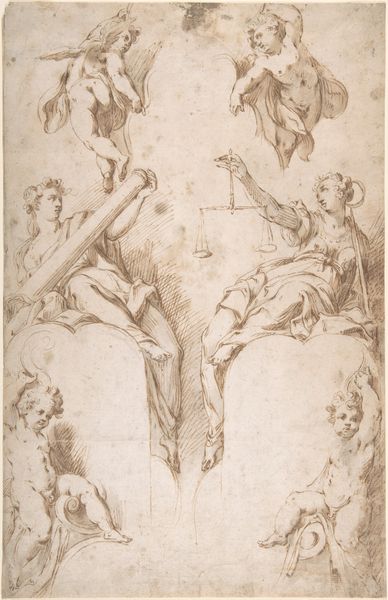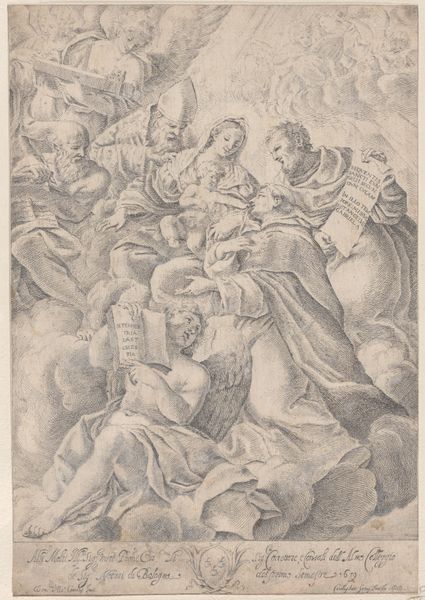
Madonna mit dem Heiligen Laurentius und einem heiligen Bischof c. 1580
0:00
0:00
drawing, paper, ink, chalk
#
drawing
#
high-renaissance
#
figuration
#
paper
#
ink
#
chalk
#
history-painting
Copyright: Public Domain
Curator: Before us, we have "Madonna with Saint Lawrence and a Saintly Bishop," a High Renaissance drawing by Antonio Semino, dating to about 1580. Editor: It strikes me as being so light, ethereal, the wash almost bleaching the forms into existence. Curator: Indeed, the careful application of ink and chalk on paper produces that delicate quality. Consider the Madonna’s central placement; she anchors the composition while radiating a sense of divine grace. Editor: Yes, but consider what goes into this piece—literally. Look at the paper, surely handmade. The chalk, likely locally sourced. These choices, this careful labor, speaks to the economic and material conditions under which Semino was operating. It connects to broader trade networks. Curator: Certainly, the materiality holds historical significance. But also think about how Semino uses line and volume to create a dynamic composition. The figures are arranged to draw the eye upwards toward the Virgin, supported by swirling clouds. Observe how each element seems to point to the celestial. Editor: But isn't it also important that this elevation of the Madonna uses precious materials—chalk and ink used judiciously to represent heavenly beings? There is something very pointed in creating divinity out of mundane materials that has always interested me. Curator: Absolutely. Moreover, reflect upon how Semino used this historical scene to invoke spirituality. The placement, posture and expressions seem intended to generate awe, reinforcing a sense of religious piety, don’t you think? Editor: Precisely, though the choice of these relatively accessible materials would broaden the access to this piece. Chalk, ink, paper— these aren't the reserve of elites as gold leaf and frescoes might be. Semino’s practice reveals broader socio-economic dimensions that reflect cultural accessibility in late 16th century art practices. Curator: Very true, it adds another dimension to the work. It's fascinating how considering both the composition and the physical creation enhances one's appreciation. Editor: I completely agree; it offers a far richer interpretation when both are in conversation.
Comments
No comments
Be the first to comment and join the conversation on the ultimate creative platform.
